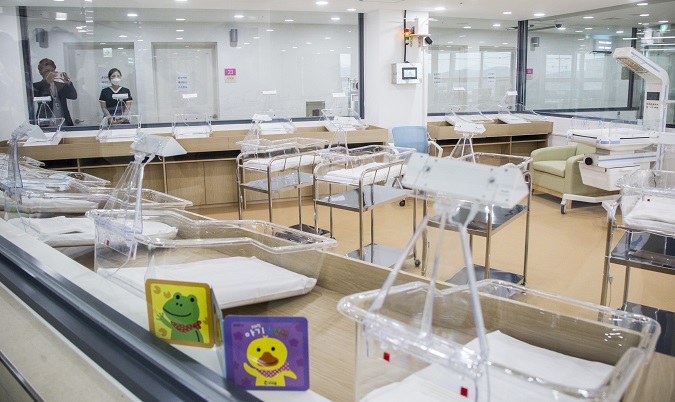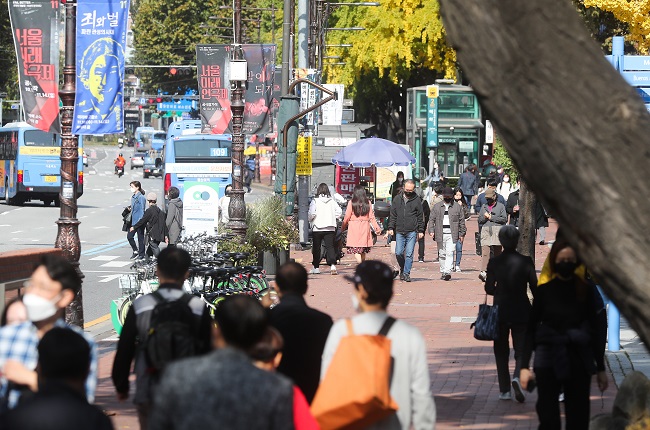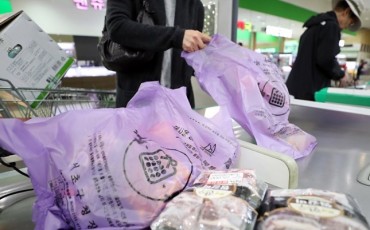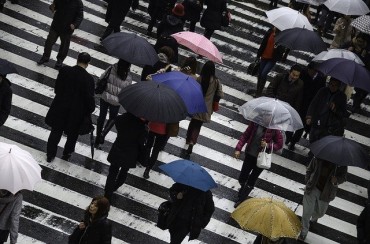
This photo, provided by a ward office in the city of Ulsan on Oct. 6, 2021, shows a public postnatal care center.
SEOUL, Dec. 9 (Korea Bizwire) — South Korea’s total population is expected to record its first decline this year, the statistics agency said Thursday, a grim assessment of its demographic situations amid the country’s chronically low birthrate, rapid aging and a decline in incoming foreigners during the pandemic.
The country’s total population is estimated to have peaked at 51.84 million last year before falling to an estimated 51.75 million this year and an estimated 37.7 million in 2070, according to the latest medium variant projection by Statistics Korea.
The latest projection is much bleaker than the agency’s previous estimate in 2018, when South Korea’s population was forecast to begin to decline in 2029.
The total population is calculated based on childbirths and deaths data and cross-border movements of foreigners who are living in South Korea for more than three months.
It showed that the country’s total population is likely to shrink to some 51.2 million in 2050 before declining to 37.7 million in 2070, a level seen in 1979.
In a worst-case scenario, the country’s population will likely shrink to 31.53 million in 2070, a level recorded in 1969.
The latest forecast underscores South Korea’s demographic challenges from its chronically low birthrate and rapid aging.
South Korea’s population suffered its first natural fall last year as the number of deaths outpaced that of newborns.
But its total population is expected to start to decline this year as childbirths hit all-time lows and inflows of foreigners have fallen amid the COVID-19 pandemic.
Many young people are delaying or giving up on getting married or having babies due to economic difficulties and changes in social norms. The number of those getting married sharply fell due to the COVID-19 pandemic.
The country’s total fertility rate — the average number of children a woman bears in her lifetime — hit a record low of 0.84 last year, much lower than the replacement level of 2.1 that would keep South Korea’s population stable at 52 million.
It marked the third straight year that the total fertility rate was below one.
The total fertility rate is forecast to nosedive to 0.7 in 2024 before rebounding to one in 2031.
“The fertility rate and the number of newborns are forecast to further decline over the next three and four years. Population aging is expected to proceed at the fastest pace in the world,” Kim Su-young, an official at Statistics Korea, told a press briefing.
The fall in childbirths is feared to aggravate a major drop in the working-age population, a phenomenon known as a demographic cliff.
In 2020, the working-age population, or people aged 15 to 64, came to 37.4 million, accounting for 72.1 percent of the total population. Baby boomers, born between 1955 and 1963, began reaching age 65 last year.
Such population is forecast to fall an average of 360,000 per year in the 2020s and decline 530,000 per year in the 2030s.
If this trend goes on, the working-age population will likely reach 17.37 million in 2070, making up 46.1 percent of the total population.
A continued fall in the working-age population spawns concerns that the country’s growth potential could be eroded.
Policymakers warned the country may face an “age quake” starting in 2030-40, an earthquake-like demographic shock from a fall in population and rapid aging, if it does not promptly tackle the issue.
The number of senior citizens came to 8.15 million last year, accounting for 15.7 percent of the total. It is projected to exceed 10 million in 2024 and reach 17.5 million in 2070, making up 46.4 percent of the total population.
South Korea became an aged society in 2017, in which the percentage of those aged 65 or older exceeded 14 percent. The country is widely expected to become a super-aged society in 2025, when the percentage of the elderly will top 20 percent.
Last year, every 100 working-age people had to support 39 people who are aged younger than 15 or aged over 65, and the number will likely triple to 117 in 2070.
The figure was the lowest among the 38 member countries of the Organization for Economic Cooperation and Development (OECD) last year. But it will be the highest among the OECD member states in 2070.
In 2020, every 100 working-age Koreans had to support 21.8 senior citizens and this will likely more than quadruple to 100.6 in 2070, the agency said.
(Yonhap)







